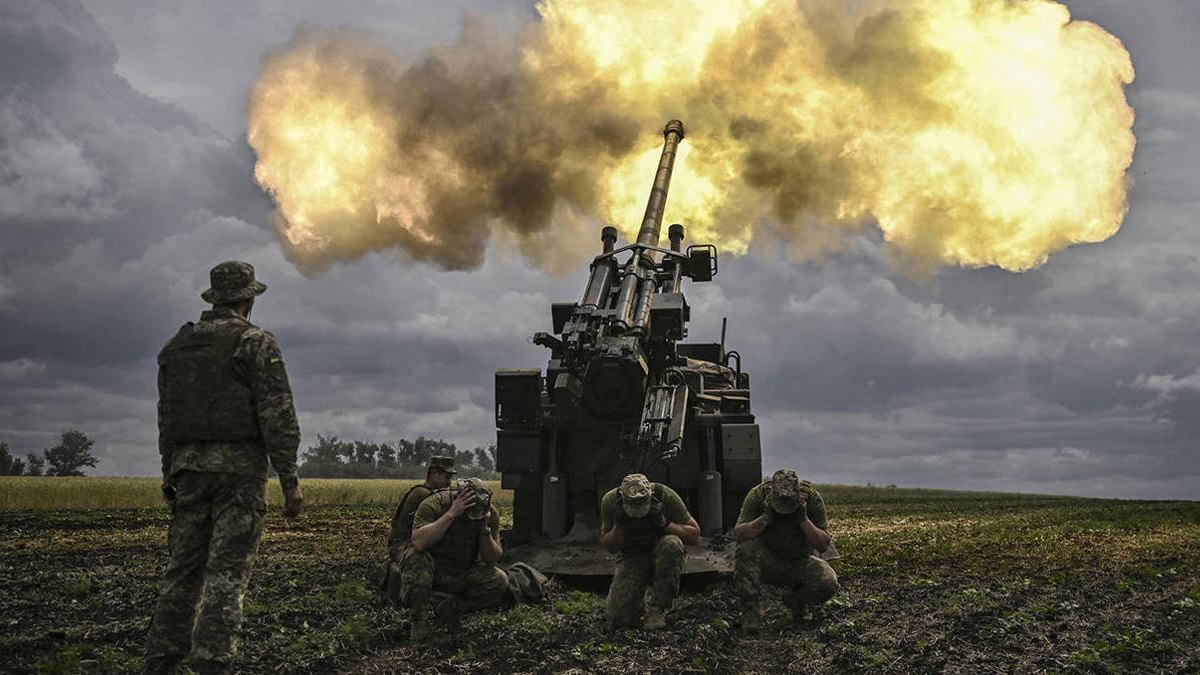
A Humanitarian Call for Arms

ODESA – It is always a worrying sign when humanitarian workers and activists start advocating for the delivery of more weapons to a combat zone. But, for Ukraine, these are worrying times (to say the least). While humanitarians like us deliver to civilians and troops the supplies they need to survive – fleece uniforms and tourniquets, portable stoves and generators, baby formula and mobile-phone power banks – Ukrainian armed forces often lack the tools they need to fight.
War calls for realism. And the horrifying reality is that, in its invasion and occupation of Ukraine, Russia has deliberately attacked civilian targets and upended civilian life, relentlessly committing atrocities that often do not even bring tangible military gains. Should humanitarian workers and activists silently carry on attending to the victims of these savage assaults, or should we add our voices to the chorus of those demanding materiel that could drive Russia out of Ukrainian territory and end the war? Given the humanitarian implications of more war – including more refugees from Ukraine – the answer is obvious.
A similar dilemma confronts Ukraine’s foreign backers. As Morton Abramowitz, a longtime US State Department official who went on to co-found the International Crisis Group, often said: policymakers must decide whether to deliver “Stinger missiles or macaroni.” He should know, having worked on delivering both, in Afghanistan and Bosnia, respectively.
The West has certainly gone beyond delivering “macaroni.” When Ukrainian President Volodymyr Zelensky, days before Russia launched its full-scale invasion, told attendees at the Munich Security Conference that indifference to Russian aggression would make them accomplices, no one could have imagined that the United States would send Ukraine HIMARS rocket systems, Stryker and Bradley fighting vehicles, or Patriot missile-defense systems. Yet all these weapons – plus British Challenger 2 tanks, German Leopard 2 tanks, and much more – are either in or headed to Ukraine.
But whether the next request – for warplanes – will be met remains up in the air. Planes may be delivered eventually, but by the time that happens – if it does – many more Ukrainians will have died defending their country’s sovereignty.
This fits a broader pattern: Ukraine’s Western supporters seem locked into too-little-too-late mode. They weigh pros and cons, count their tanks and refurbish their missile launchers, tally costs and envision potential outcomes, before delivering a few more desperately needed, long-overdue weapons.
Why all the hesitation? Partly, it seems, the West wants to heed the lessons of past wars. Senior US State Department staff, on a recent visit to our Odesa office, expressed their concerns that Russia’s war against Ukraine could turn into a quagmire, à la Afghanistan. The world would regret the presence of highly sophisticated weapons in such a context.
As our American visitors reminded us, the US (on Abramowitz’s advice) delivered Stinger missiles to the mujahideen rebels to aid in their fight against the Soviets during the Cold War, only for the rebels, and later the Taliban, to turn their US-bestowed weapons on American troops. The disastrous Iraq war – where the case for US-led intervention was weaker than in Afghanistan – may also weigh on American policymakers’ minds.
But wars from which the US and its European allies are drawing lessons are nothing like the one now raging in Ukraine. There is no talk of regime change in Ukraine. Rather, the West is responding to desperate calls for help from an ally – with a democratically elected president and functioning parliament – that has become a victim of aggression by a much larger power.
Ukraine’s government and people have made clear their desire to be a part of the free Western world, not Putin’s repressive post-Soviet dictatorship. It is precisely because Ukraine aspires to join the European Union and NATO that the neo-czarist in the Kremlin decided to try to wipe the country off the map.
This aspiration has not waned. As Zelensky told the European Parliament last month, Europe – with its rule of law, fair elections, open societies, and inviolable borders – is Ukraine’s “way home.” Ukrainians’ unity on this point should be enough to assuage US concerns about an “Afghan” scenario.
Another fear is that Russia will overwhelm Ukraine’s forces and capture Western weaponry. But this scenario is not supported by the facts on the ground. Though Russia has vastly more soldiers and weapons than Ukraine, it has suffered tremendous losses. While the precise figure is not certain, it is estimated that some 200,000 Russian troops have been killed or wounded so far. With Russian forces’ logistics, tactics, and morale showing no signs of improvement, not even Kremlin propagandists believe that Russia can subdue all of Ukraine.
There is little doubt, however, that Putin will continue to sacrifice Russian troops and commit atrocities against Ukrainians for the chance to secure even minor symbolic victories. So, the war will drag on – unless Ukraine is given the means to accelerate its conclusion. That includes fighter jets. The pilot’s helmet that Zelensky presented to the speaker of the British Parliament last month bore these words: “We have freedom. Give us wings to protect it.”
Anna Husarska is a former senior policy adviser at the International Rescue Committee and a former senior political analyst at the International Crisis Group. Nikolay Viknianskyi is a humanitarian activist based in Odesa.
Copyright: Project Syndicate, 2023.
www.project-syndicate.org















Comments